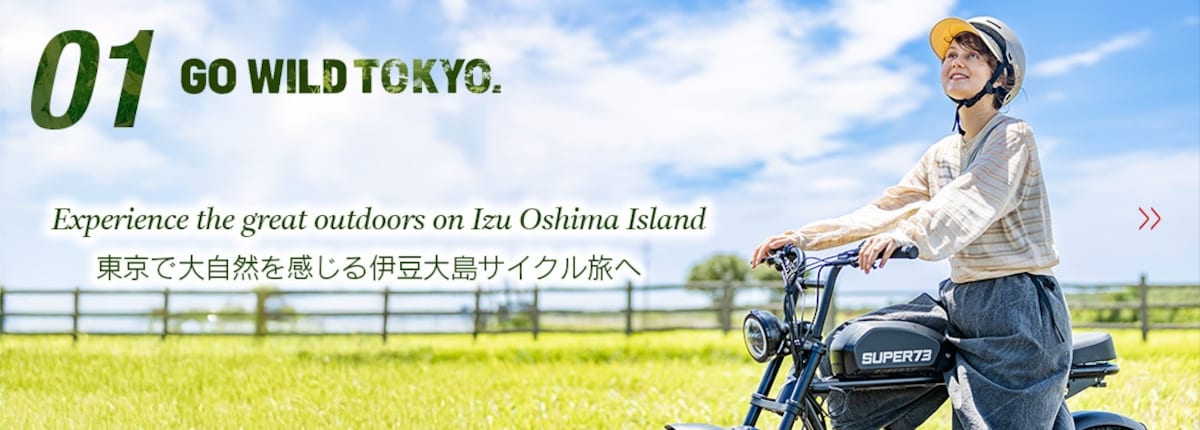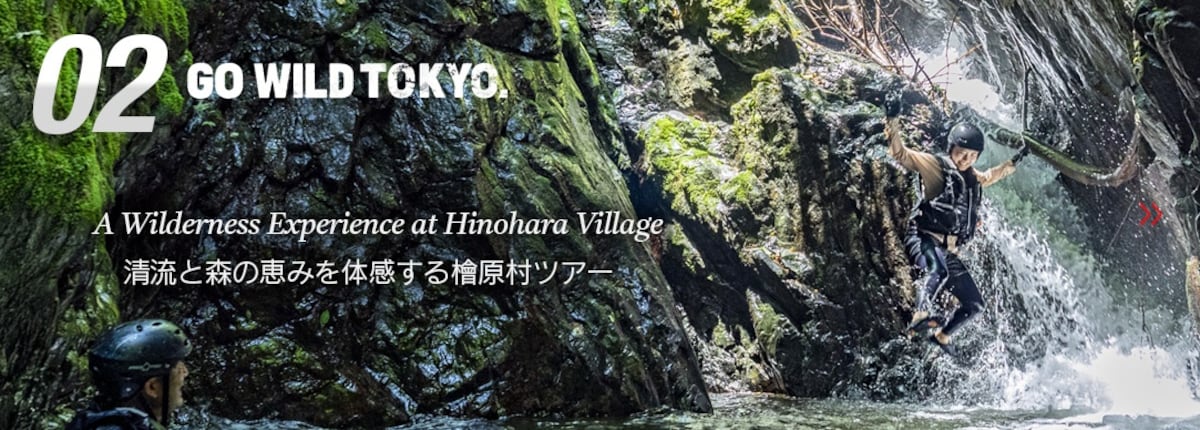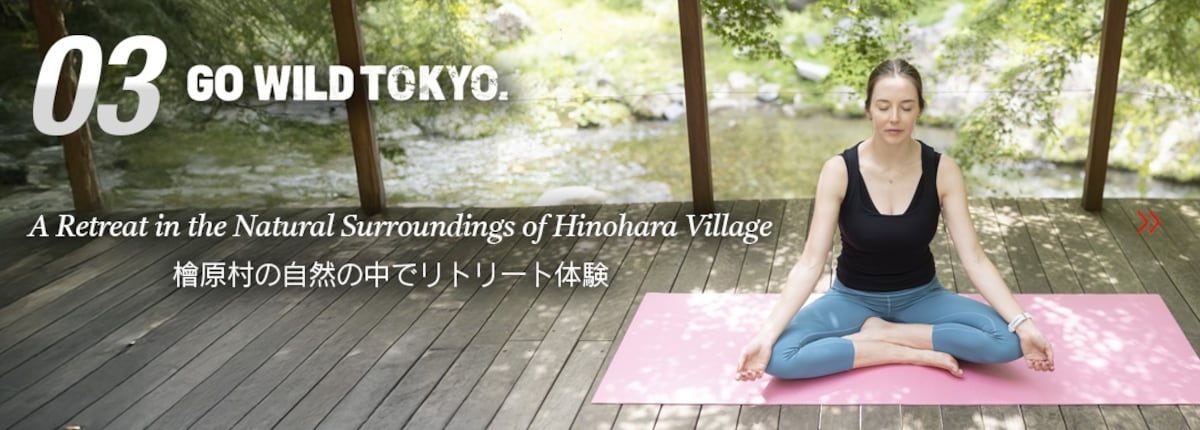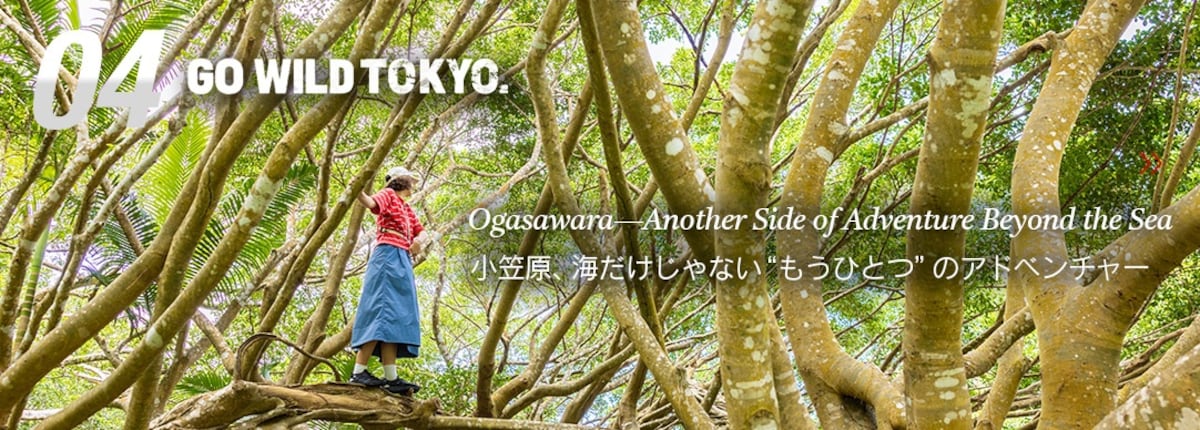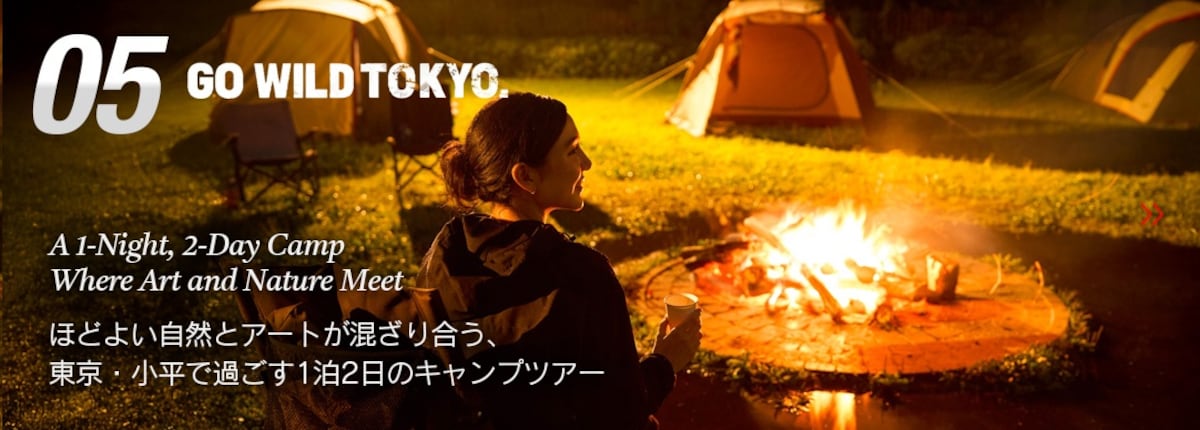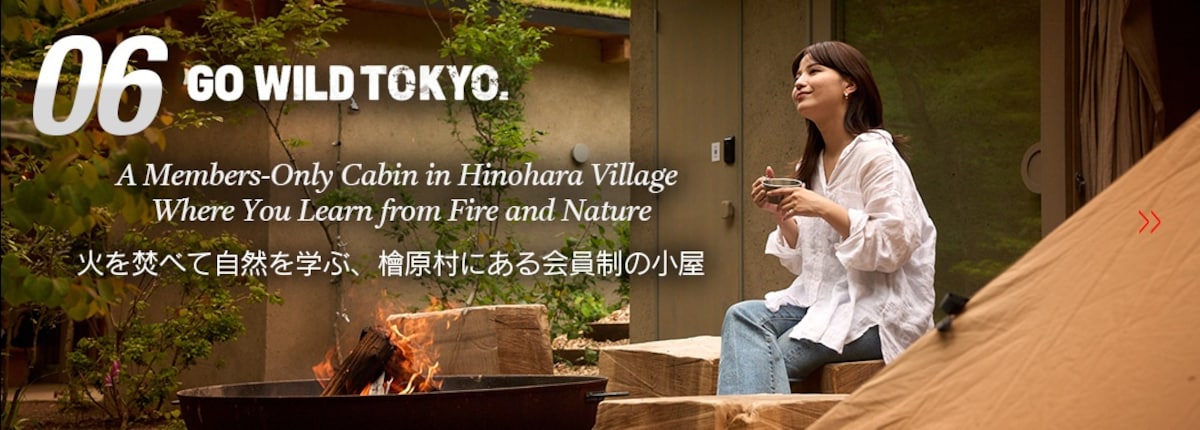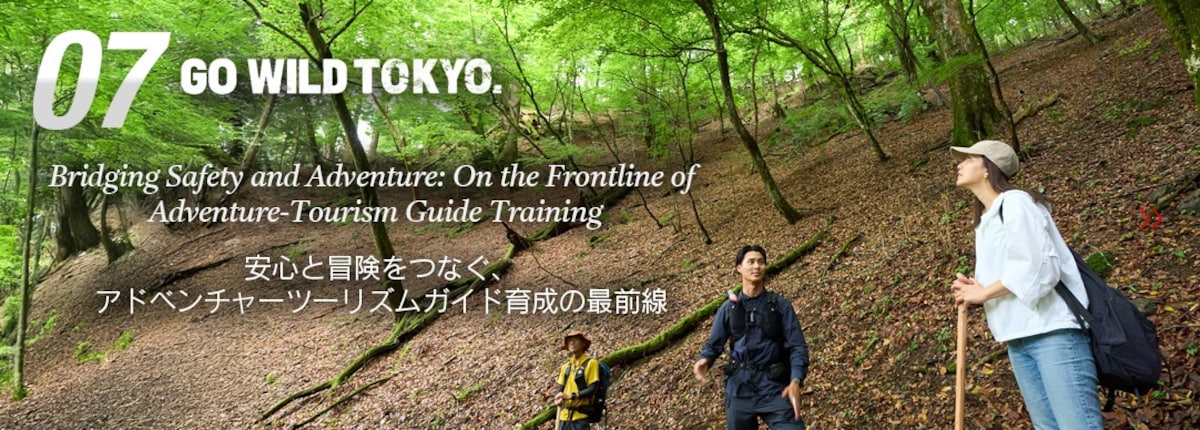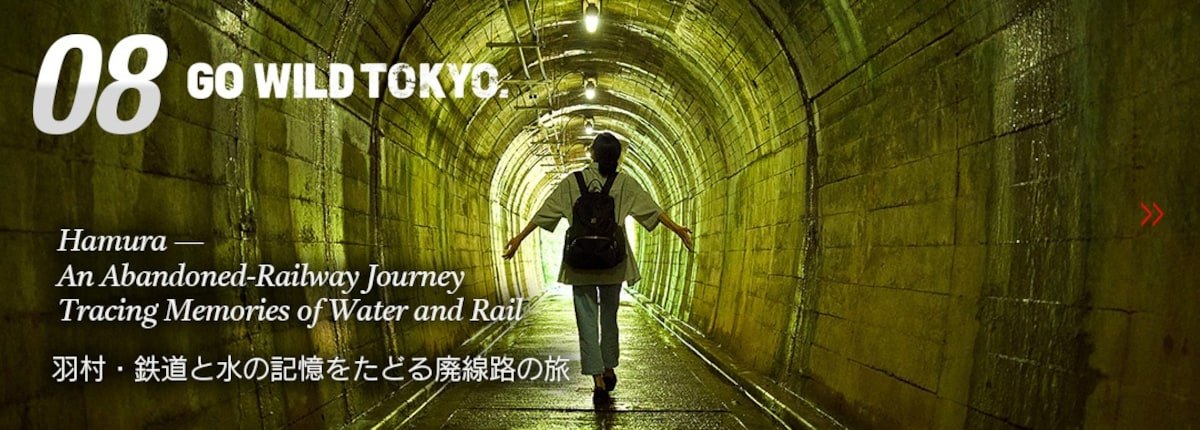GO WILD TOKYO 4/ Ogasawara—Another Side of Adventure Beyond the Sea
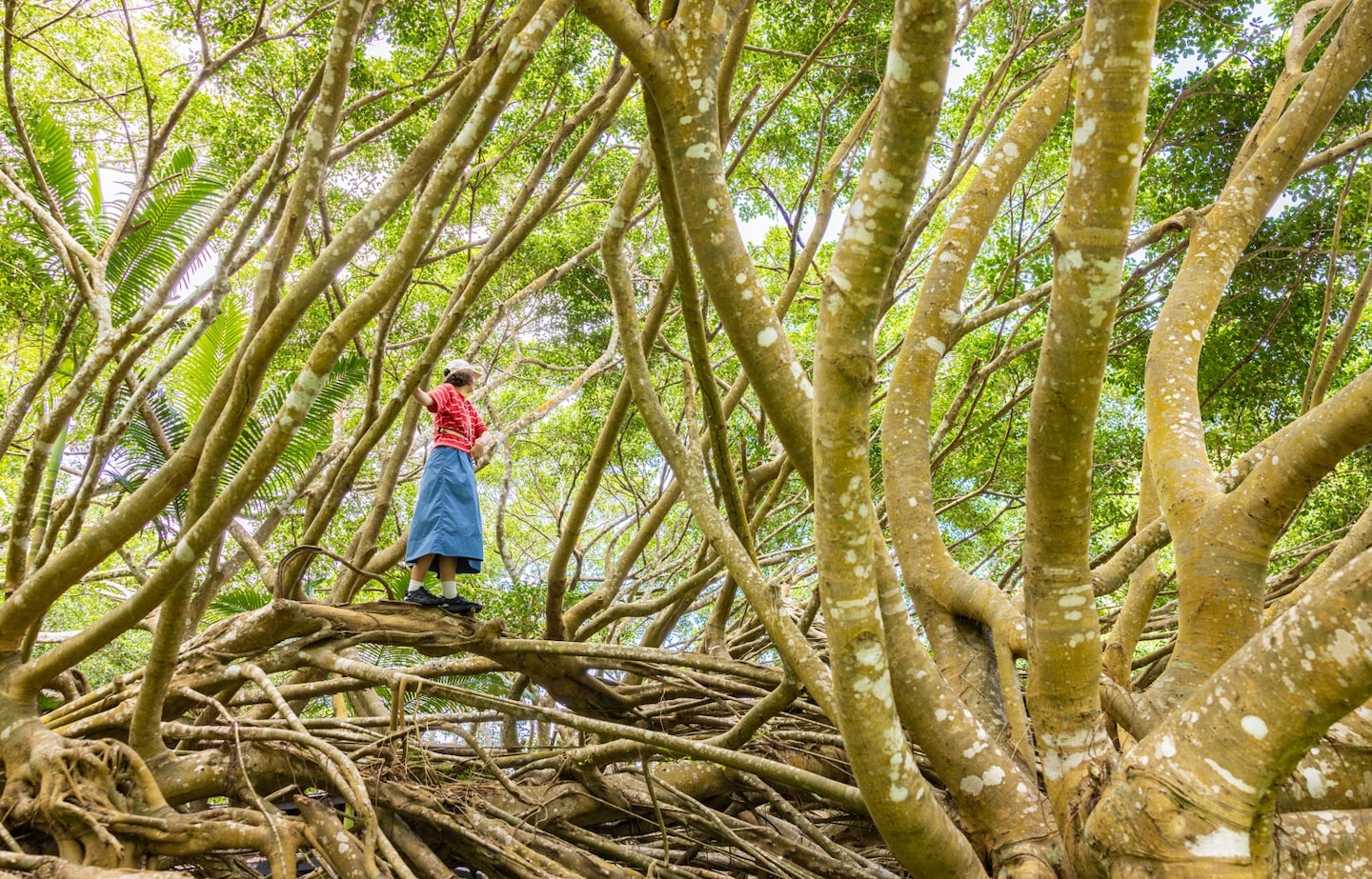
When people think of Tokyo, many picture skyscrapers and buzzing streets—but did you know the metropolis is also home to remarkable nature? Venture a little beyond the city center into the Tama and island areas and you’ll find landscapes that feel worlds away—perfect places to step out of the urban rush and reset. A style of travel increasingly popular with visitors is “adventure tourism,” built on at least two of three elements: nature, activities, and cultural experiences. Why not leave the everyday behind and set out to discover something new? GO WILD TOKYO!
By AAJ Editorial TeamRoughly 1,000 kilometers south of the capital—24 hours by ferry—the Ogasawara Islands are a UNESCO World Natural Heritage Site famed for the endemic wildlife and pristine ecosystems. In 2023, Kanaka Village, a “luxury-eco” hideaway designed for travelers seeking to reconnect with nature, opened on the largest inhabited island of Chichijima, in the remote area of Kitafukurozawa.

Kanaka Village, Surrounded by Forest
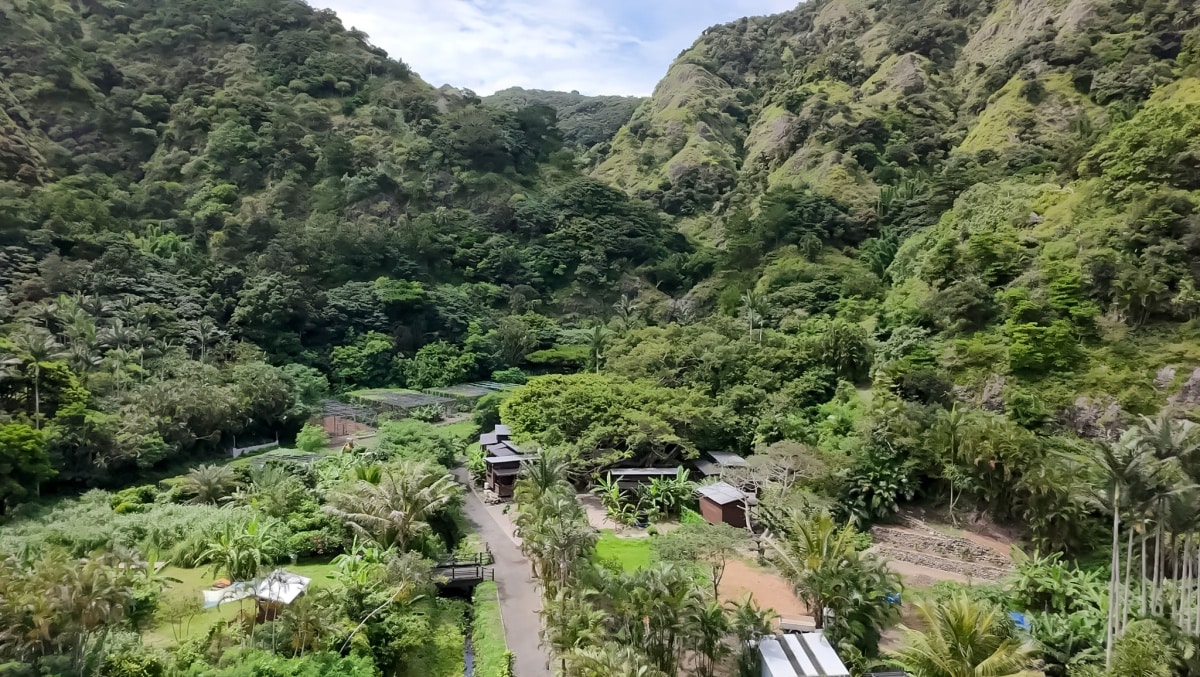
Kanaka Village is nestled in the forested hills, yet within easy reach of the coast.
About 80 percent of the Ogasawara population lives on Chichijima, the largest inhabited island in the chain and the port for the Ogasawara-maru ferry. Shops, lodgings, and the tourist office are clustered in the south-seas-flavored Omura district. Visitors can also find unspoiled forests, sheer cliffs, and secluded coves on the island’s remoter areas. Town lodgings are convenient, but travelers who want to linger in more natural surroundings will find these quieter areas far more compelling.
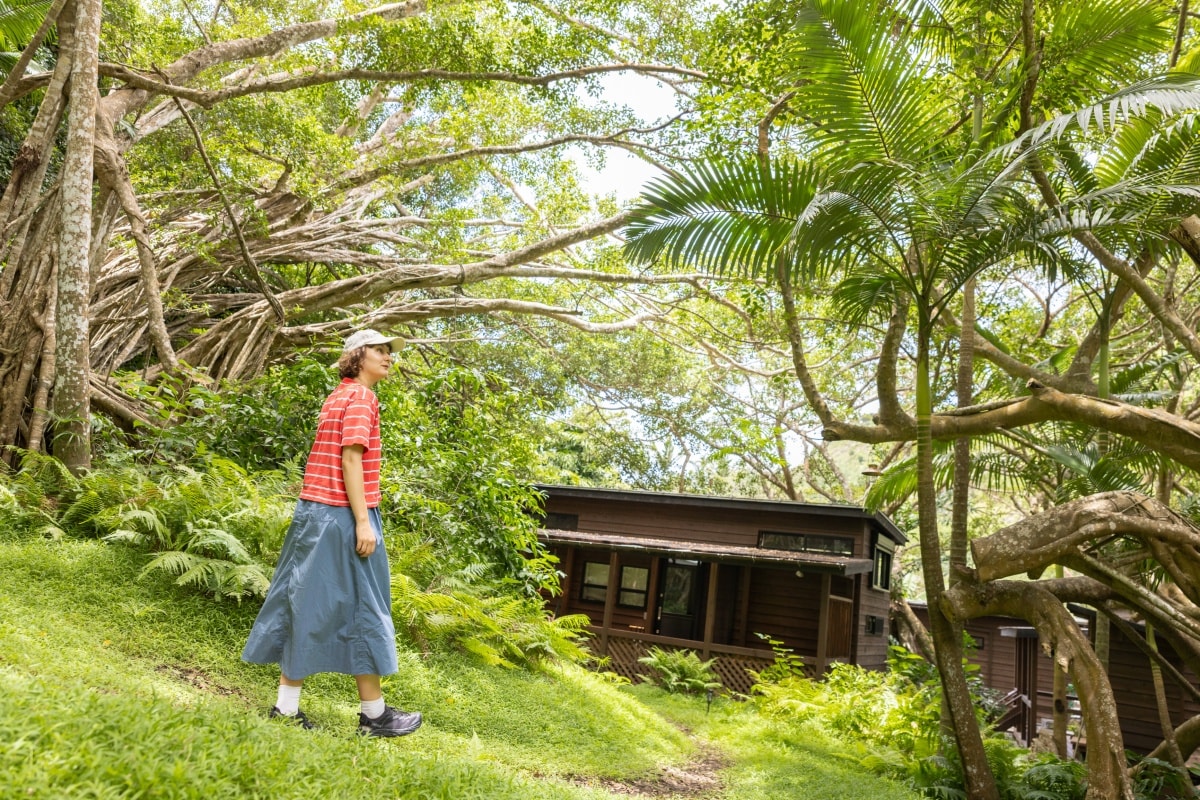
A banyan grove on the property of Kanaka Village is a symbol of the unhurried moments that can define a stay here.
In the inland forest setting of Kitafukurozawa, Kanaka Village comprises six bungalow-style trailer cottages. It offers a tranquil base for hammock-weaving, coffee roasting, and wood-fired tent saunas. Its “luxury-eco” ethos balances comfort with environmental care.
Run by Ogasawara Ecotourism Resort, the village reflects founder Hirotaka Takezawa’s decades spent guiding both sea and mountain-based tours. “I wanted the stay itself to become a way to spend time face-to-face with nature,” he says. The slow down in tourism during the COVID pandemic helped make his vision a reality.
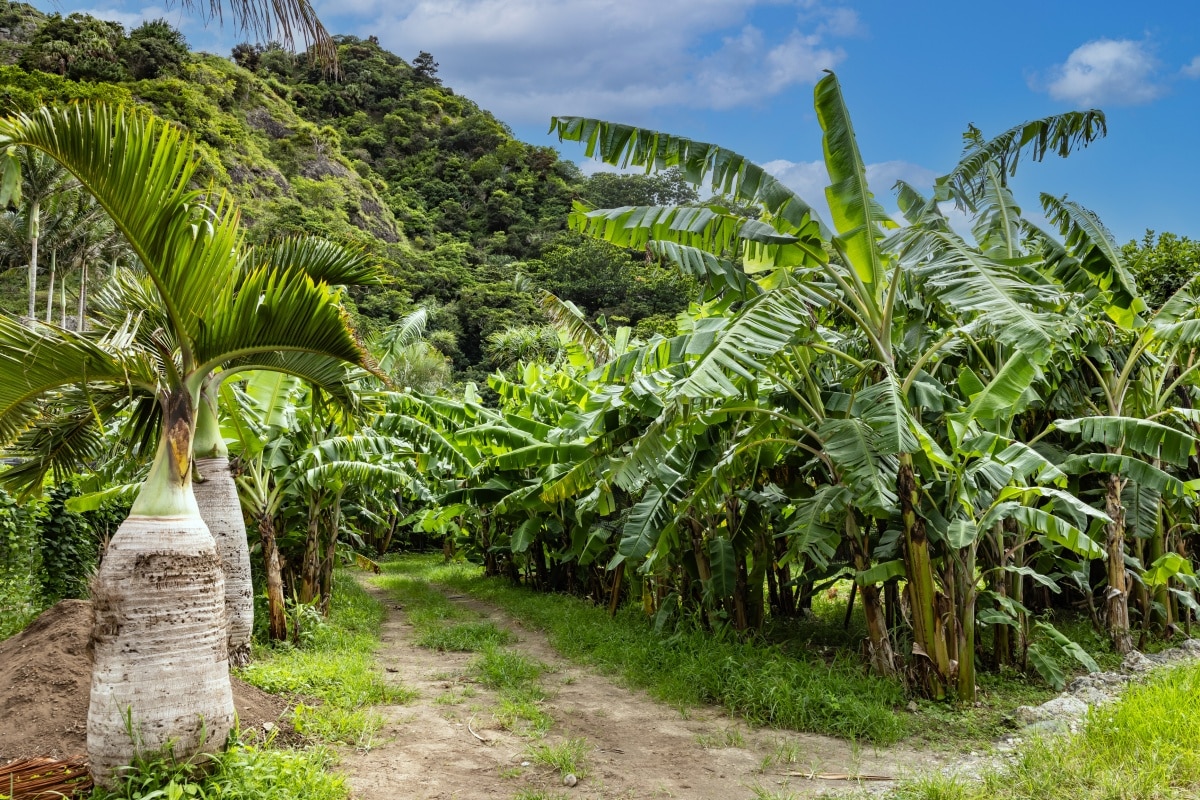
Bananas, coffee, and more foods are grown on the grounds of the village farm.
When tourism work dried up due to the lack of visitors, his team asked what they could do next. “We remembered this forest—an abandoned farm plot no one touched,” Takezawa says. “As we dug in with shovels, I felt that ‘time unique to this place’ might emerge.”
The trailer lodgings, kitchen trailer, and tent saunas are located around the spreading banyan tree at the site’s center.
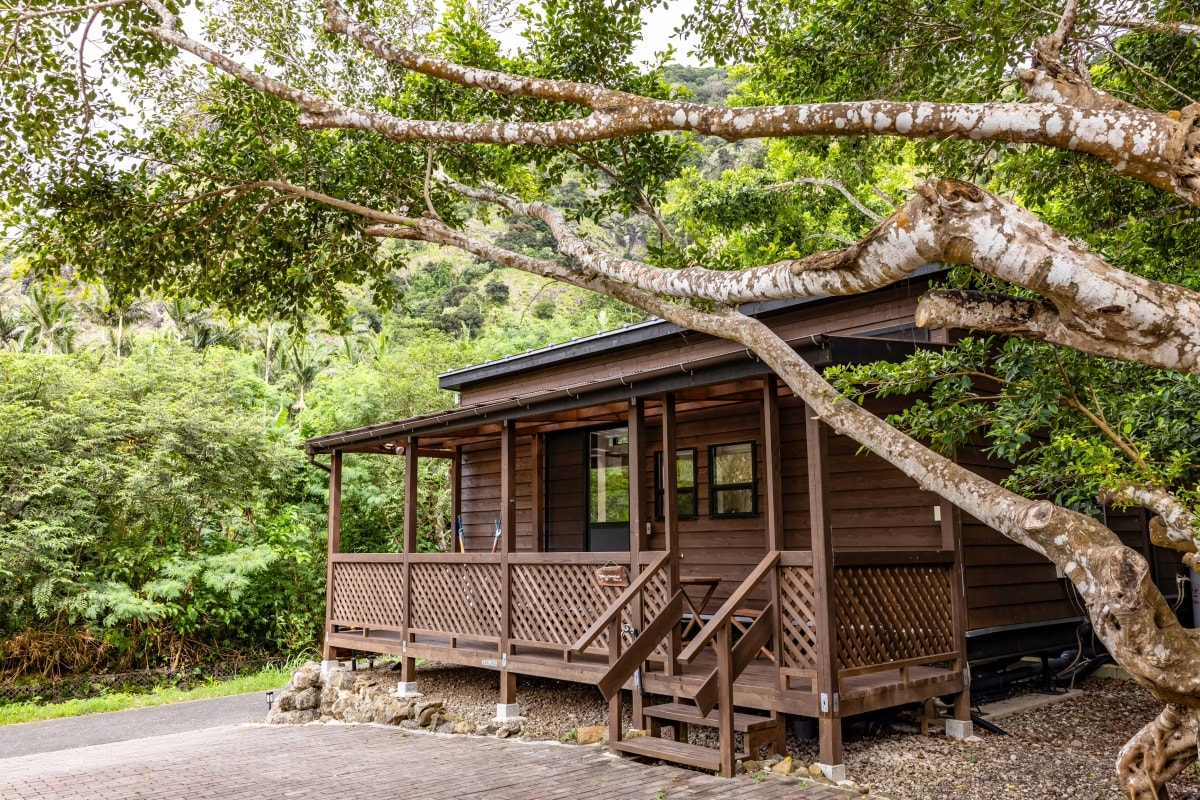
Trailer houses blend into the forest; covered terraces keep you close to nature even on rainy days.
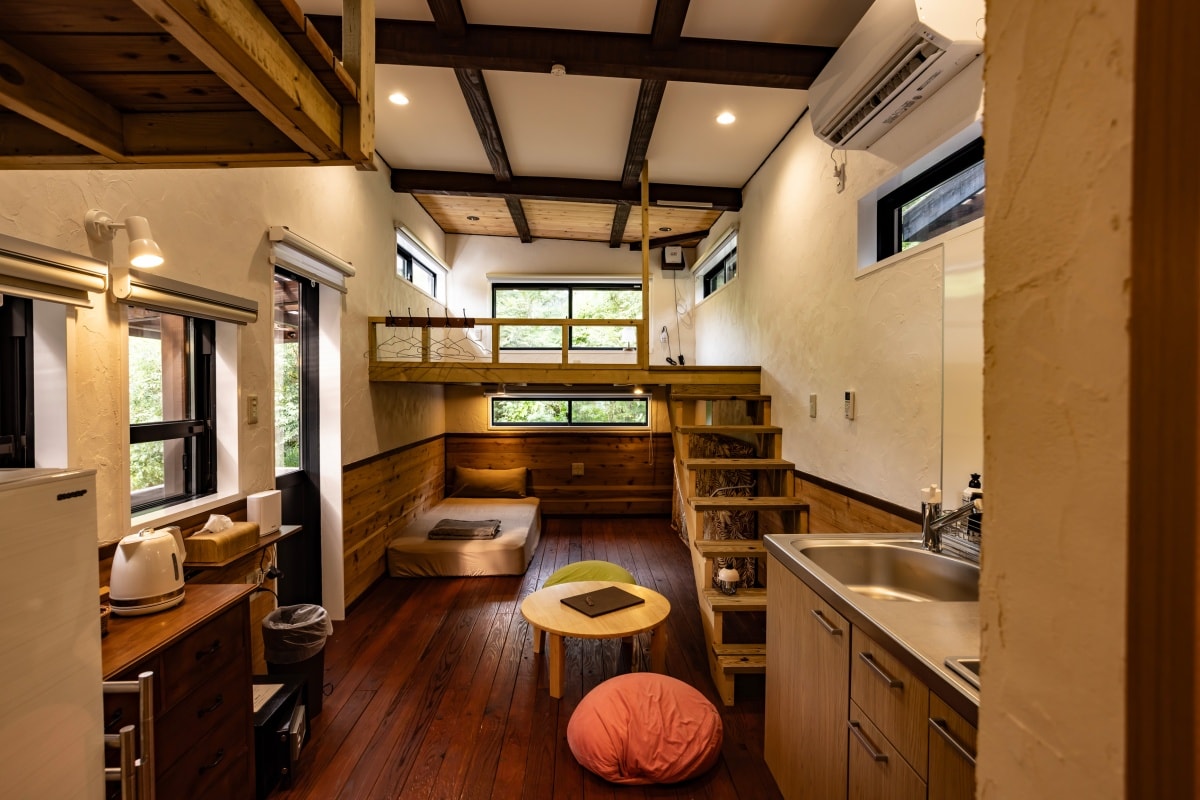
The houses feature warm wood-toned interiors with kitchen, toilet, and shower that can accommodate up to five guests.
Wireless connection can be spotty in Kitafukurozawa, so relay antennas help to ensure connectivity. Food-waste processors and thoughtfully sited insect lights (to protect endemic species) support comfort without excess—an embodiment of Takezawa’s dream of a “life in harmony with nature.”
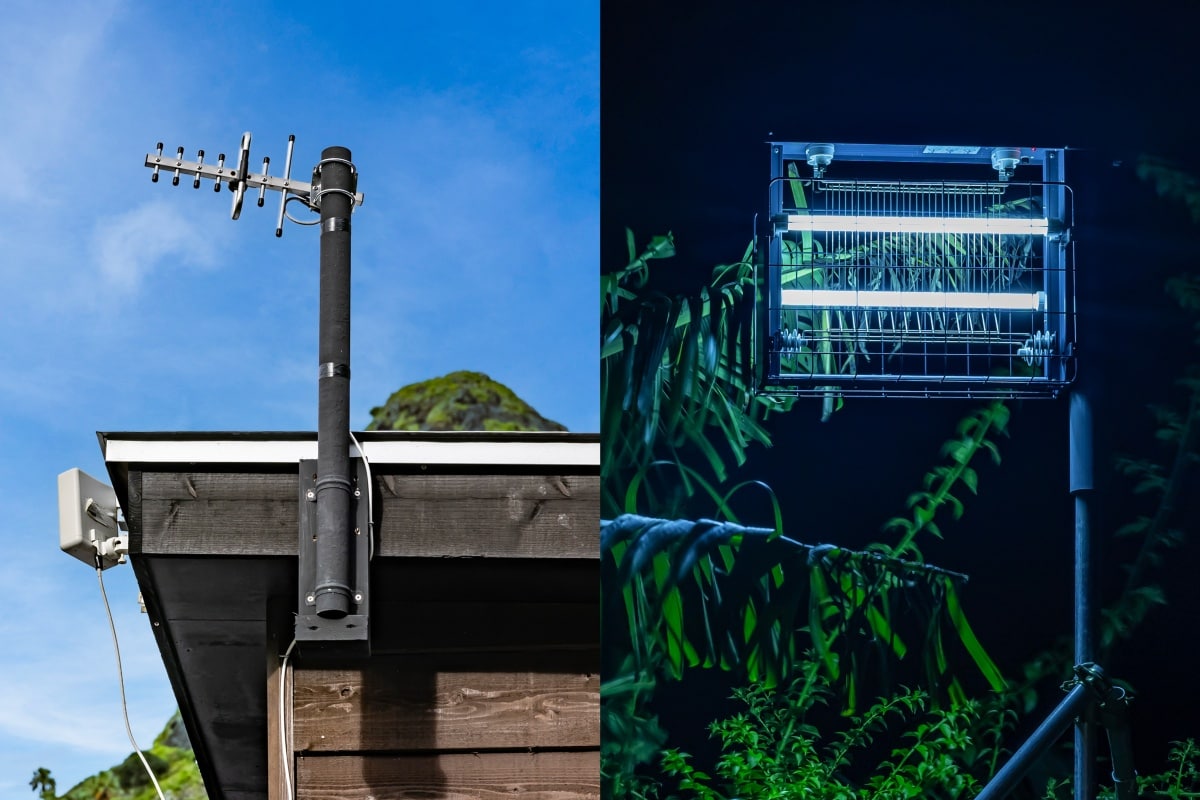
(Left): Relay antennas provide stable connections deep in the valley, which is key to a quality stay.
(Right): Bug zappers are placed away from lodgings to minimize the impact on endemic species.

Working with Your Hands, Feeling the Forest Multiple Hands-On Programs
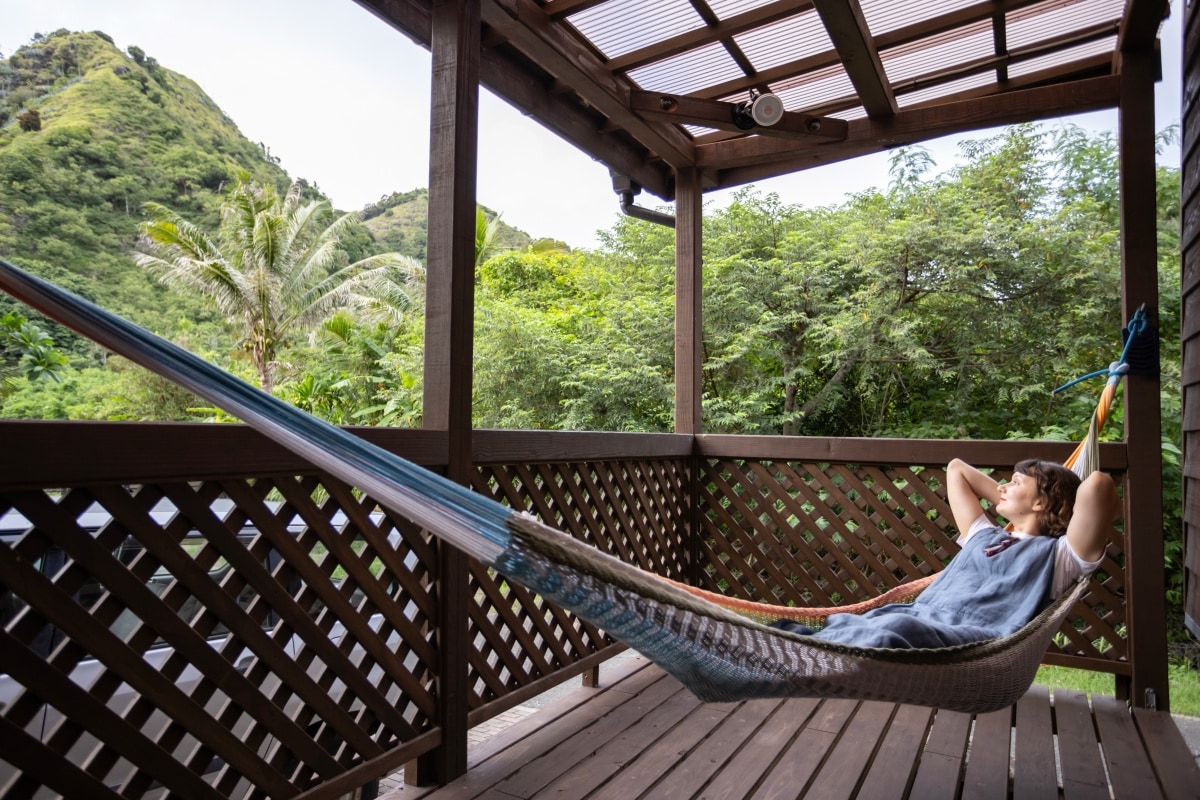
Guests are encouraged to indulge in simple pleasures, such as swaying in a hand-woven hammock on a forest-ringed terrace.
Many visitors to these islands cram guided tours into their short stays. Takezawa watched this happen for years, and felt something was missing. Visitors had little time to truly understand the island’s nature and way of life. “The schedules were too packed, with little time to enjoy the natural stillness of this island,” he says. “I wanted to offer people stays where simply being here could feel complete.”
One method is the hammock-weaving workshop. There are no special skills needed—participants simply knot ropes to finish a small chair-type hammock in about four hours, then hang it between banyans and lay back to enjoy it.
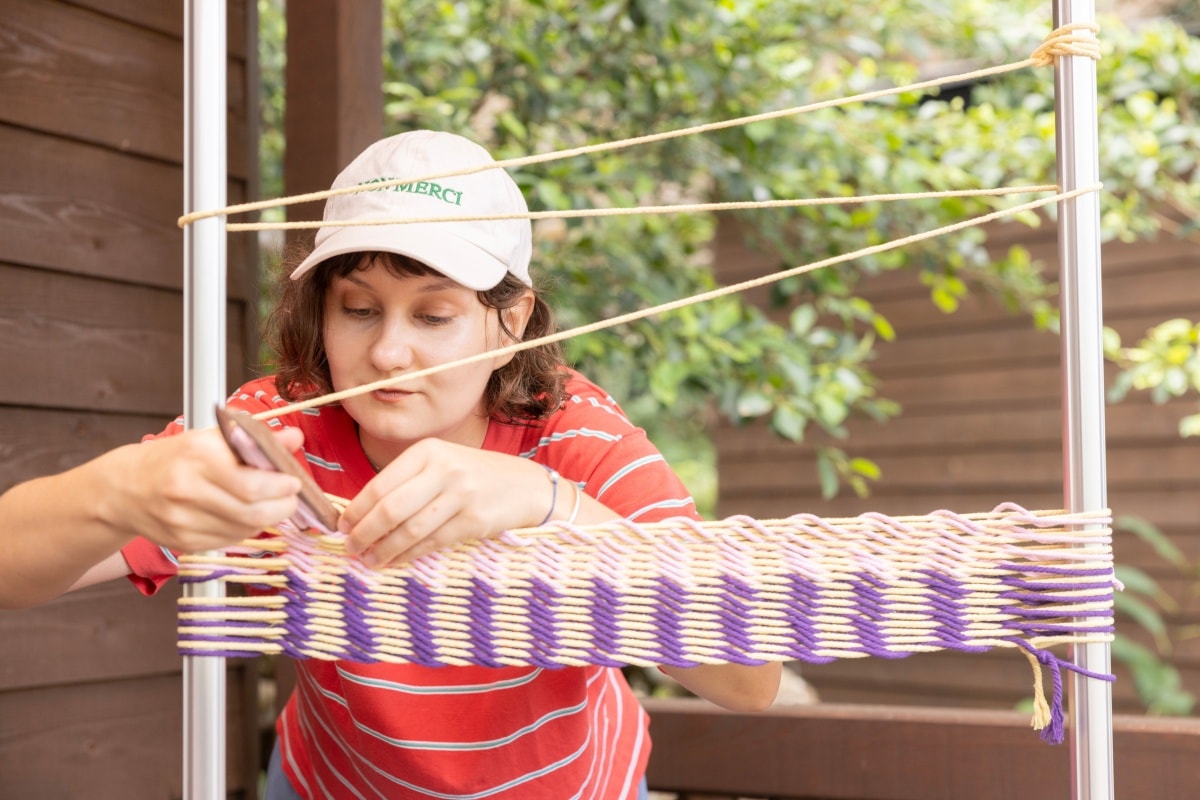
Making a compact chair-style hammock takes roughly four hours.
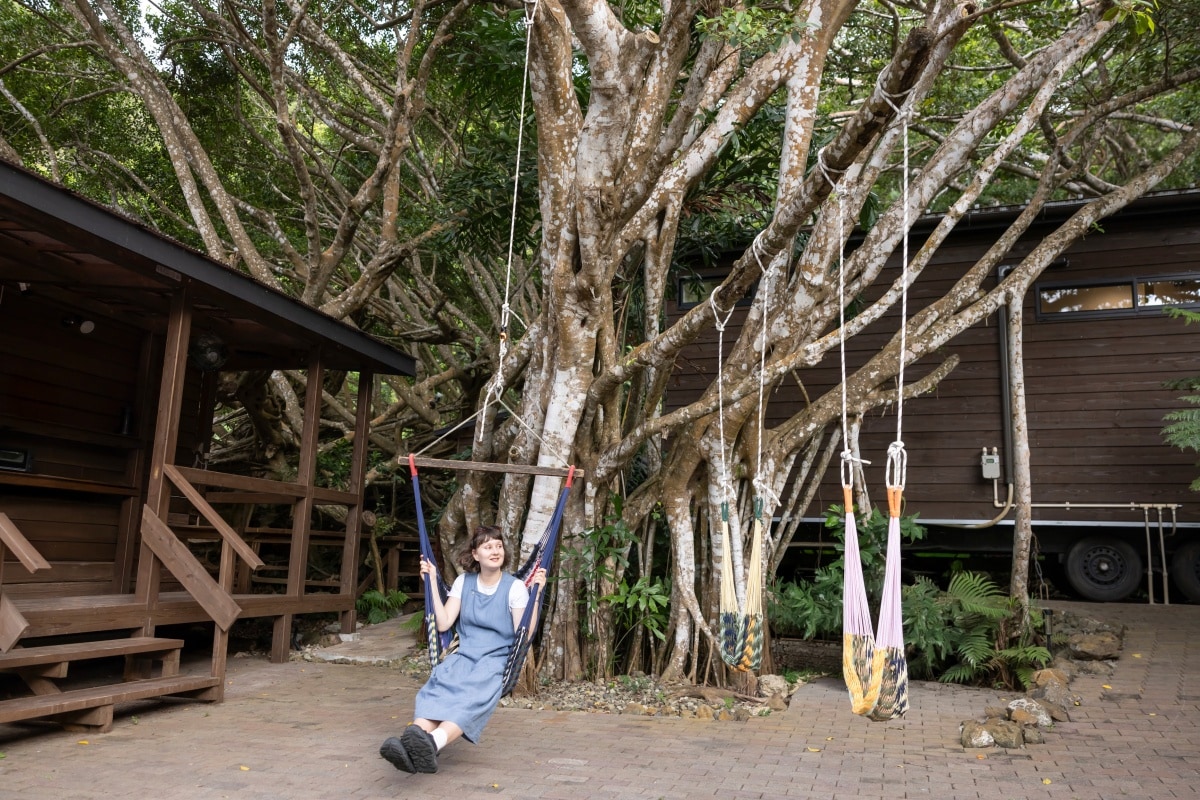
Visitors are encouraged to string up their finished work on sturdy banyans and relax to island time.
Bad weather can affect programs, so flexibility is key. “That’s when having a place for enjoying ‘doing nothing’ is important,” says Takezawa. These programs are gentle invitations to enrich your time on site.
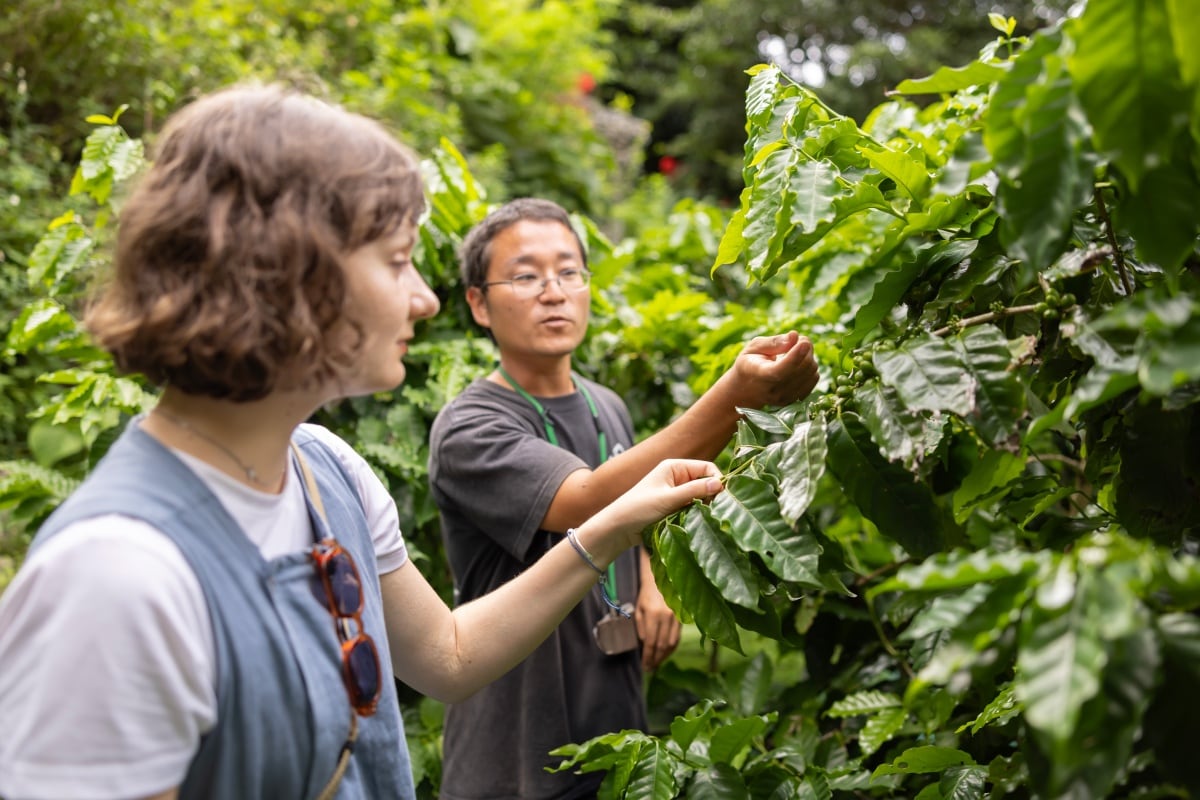
“Ogasawara coffee is mild with restrained acidity,” says farm manager Katsuya Yatabe.
Another activity for guests is roasting Ogasawara-linked coffee on site. Cultivation began in the Meiji era, ceased with the 1944 evacuation, then was revived after the islands’ 1968 return, using wild seedlings and the surviving mother trees. Farmers have continued to protect the lineage with care. “Coffee here has a story you won’t find elsewhere—that’s why finishing it with your own hands matters,” says farm manager Yatabe.

Guests can roast local beans and savor their own brew.
Guests can relax in wood-fired tent saunas that use repurposed timber from invasive trees. “We wanted to make use of them to the very end of the cycle in a way that helps people,” says Takezawa. He hopes that visitors will heat up, then cool down in forest air, and let the island’s rhythms take over.
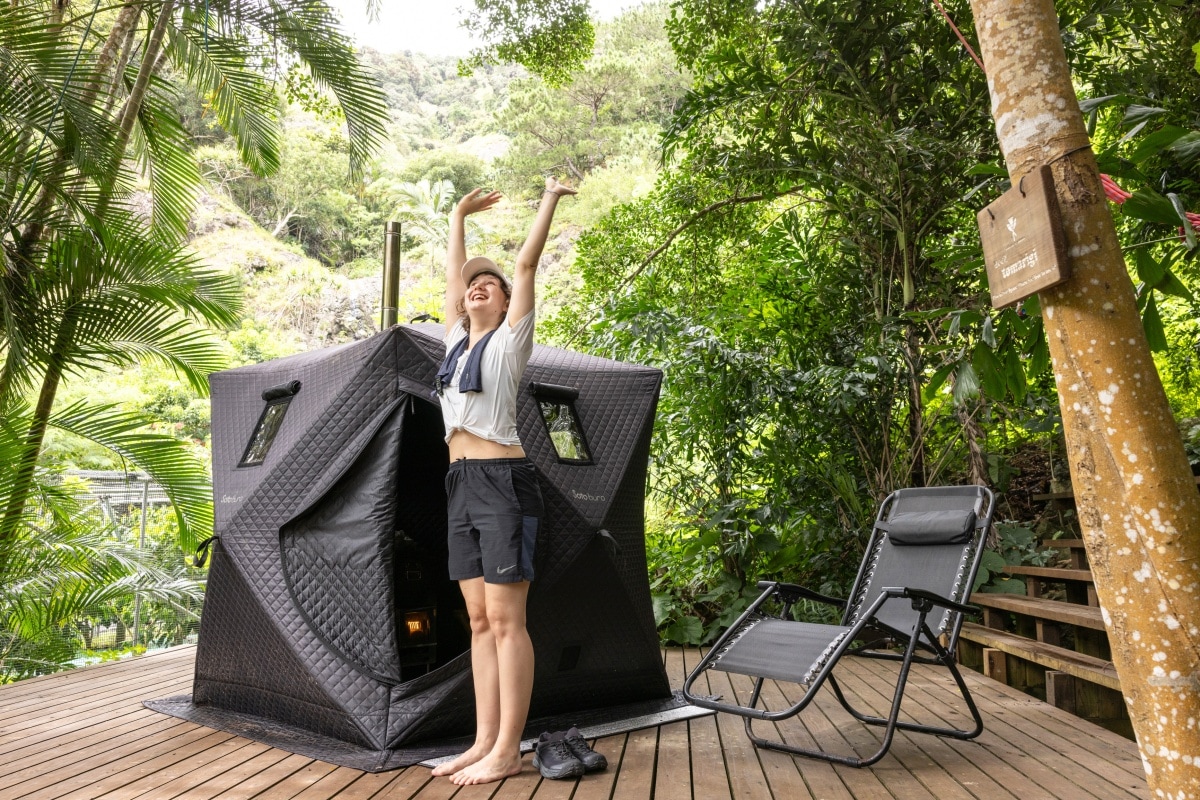
Tent saunas are scattered around the village.
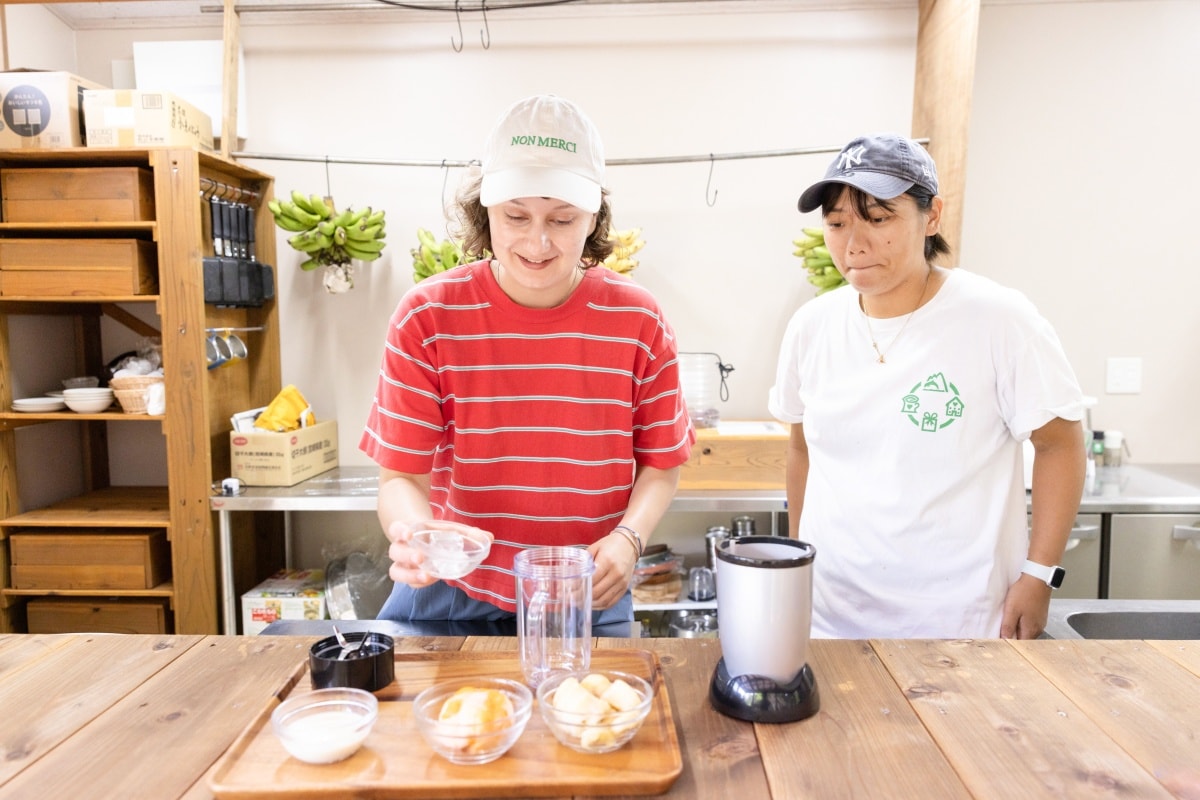
Guests can make their own smoothies in the kitchen trailer, with island bananas and passion fruit.
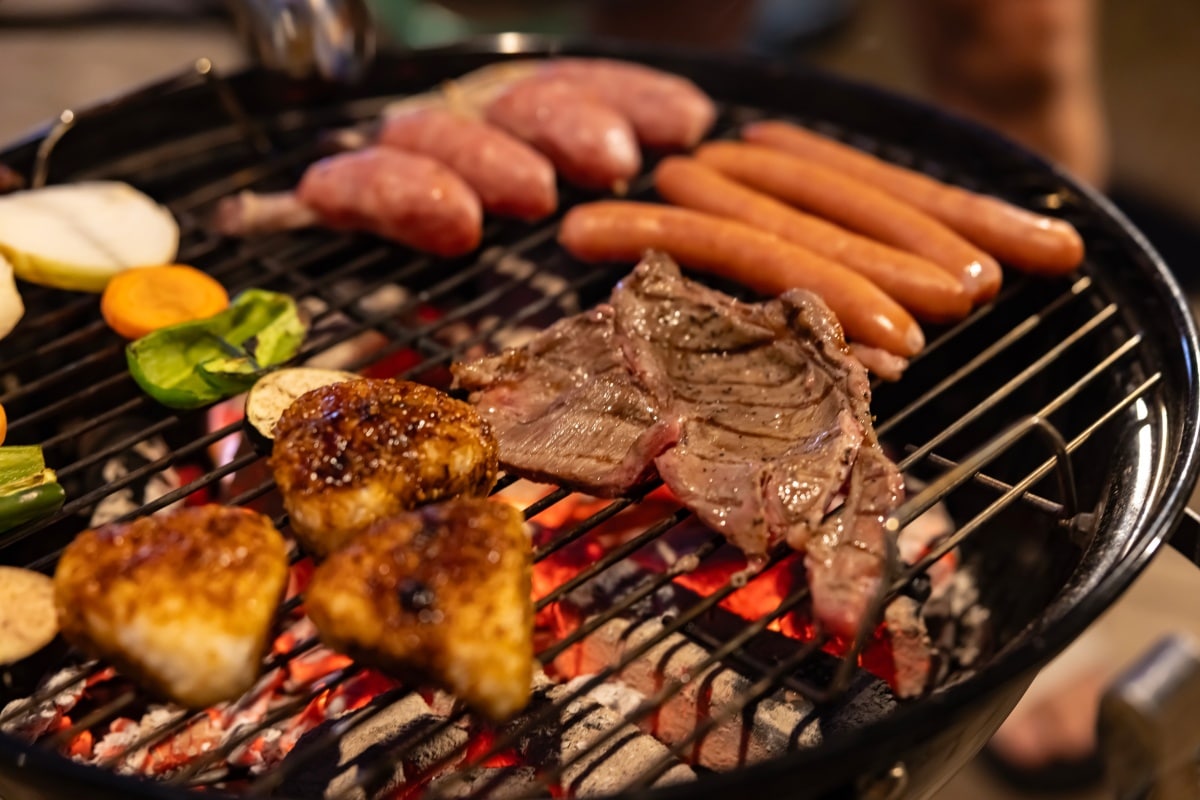
Self-catering is standard; optional BBQ sets showcase local ingredients.

Quiet Activities Unique to Ogasawara
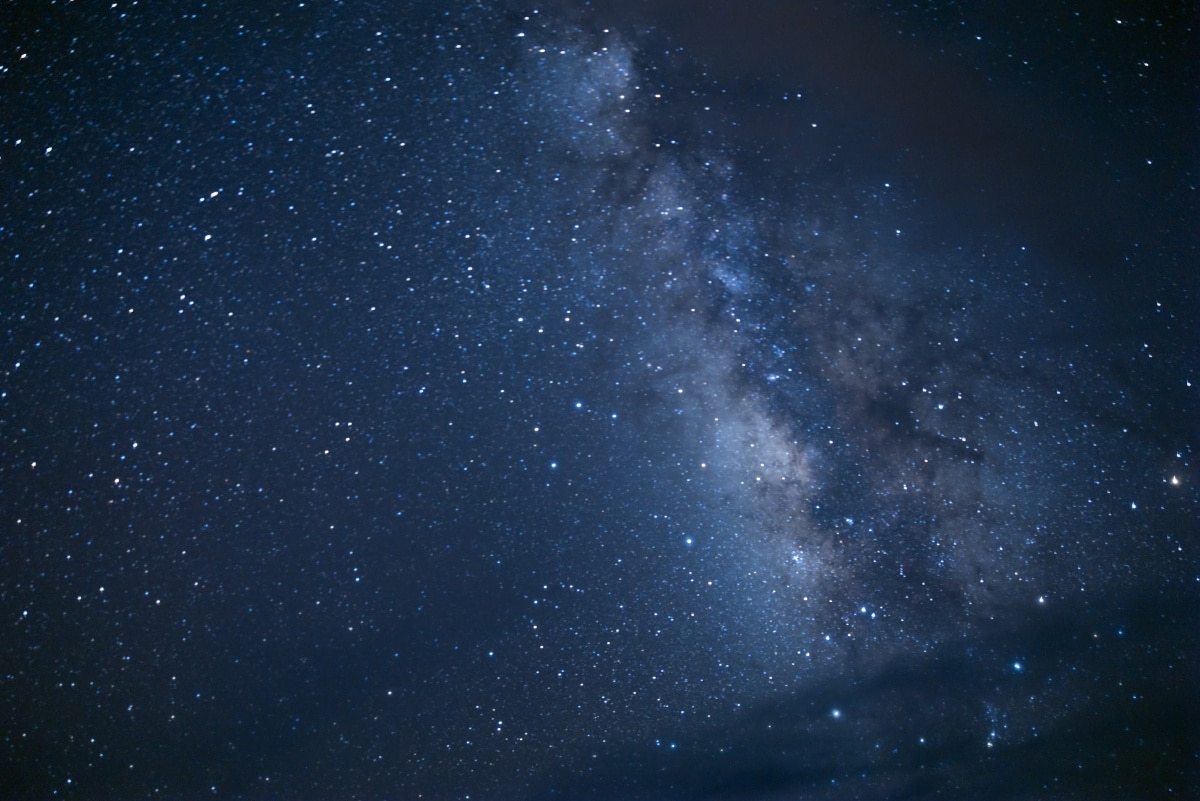
With little artificial light to interfere, the Milky Way is often visible overhead.
The commitment to unhurried time shapes nighttime as well. There are no streetlights in Kitafukurozawa, and darkness settles quickly after sunset. “Darkness is necessary for the lights of the stars to be appreciated,” says Takezawa. Lighting at the facility is kept minimal, and rooms use dimmable lamps to let the stars and moon take center stage.
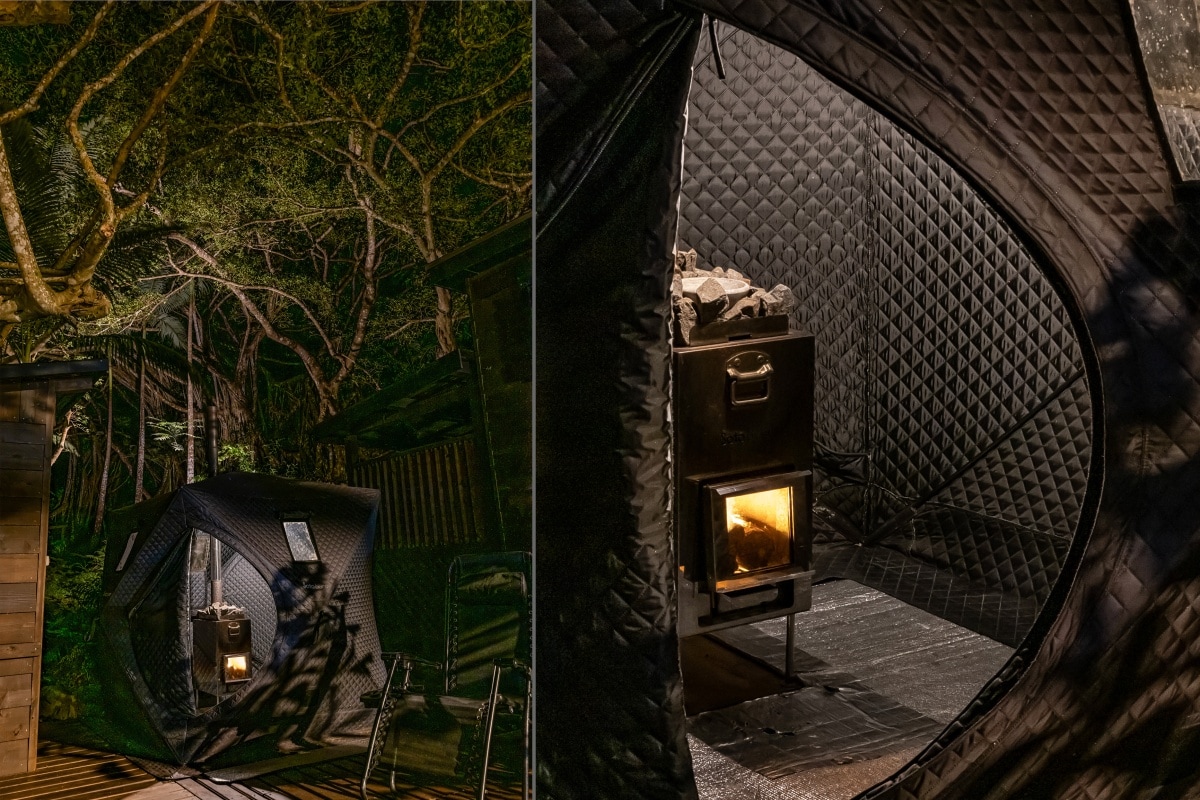
At night, tent saunas glow softly with firelight—perfect for star-gazing between sessions of heat and cool air.
Night sessions alternate gentle heat with cool forest air under a starry sky. Guests are encouraged to listen to the wind and the sounds of insects. The night atmosphere is different than that during the day.
Coconut crabs are nocturnal, so odds of catching sight of one are good at night.
There are guided night tours to nearby beaches to look for protected coconut crabs under the stars. Glimpses of the endemic Bonin flying fox or tiny bioluminescent “green pepe” mushrooms may be possible after rainfall between May and November. And with no venomous snakes on the islands, night walking is quite safe.
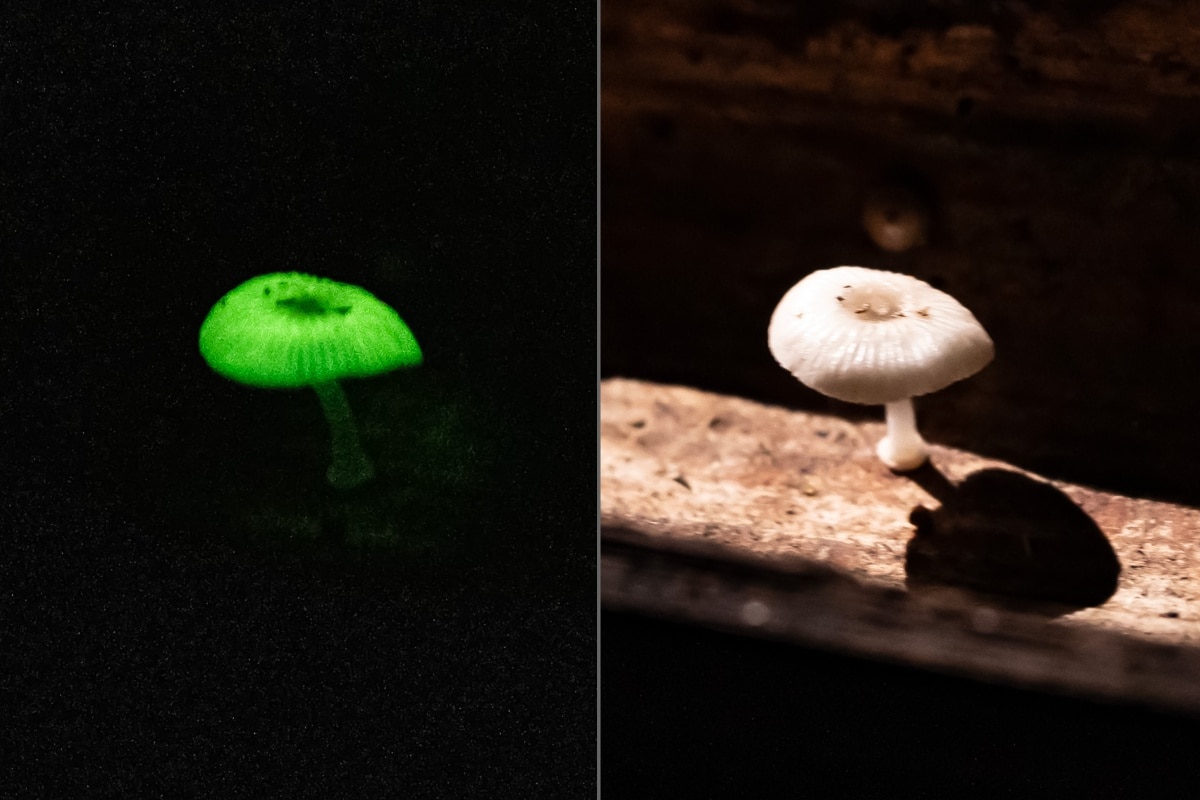
The ghostly glow of “Green pepe” mushrooms, only about 1 cm across, may be visible on rainy-season nights.

A Facility Shaping the Island’s Future
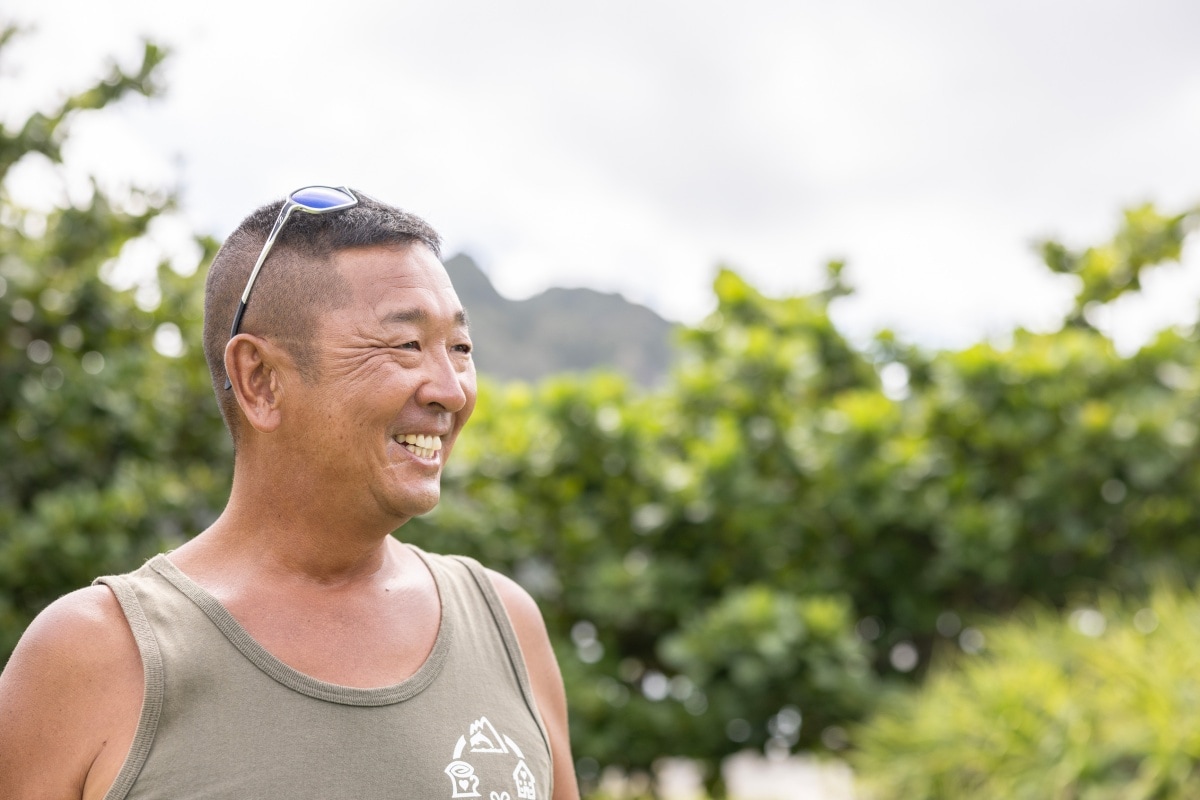
Hirotaka Takezawa, CEO of Ogasawara Ecotourism Resort.
Kanaka Village has plans to broaden its programs and welcome a wider variety of stays. “In five years the coffee trees will be taller,” says Takezawa. “And the hand-built stonework should be covered with moss by then, blending into the scene,” says Takezawa. The natural environment will complete the project over time.
Weather-resilient activities—indoor woodcraft, ropework, morning yoga, guided forest walks—are in the works, along with hiking a two-day trail that traces Commodore Perry’s route across the island in the mid 19th century. The goal is to link local resources and people in ways that support Ogasawara’s future.
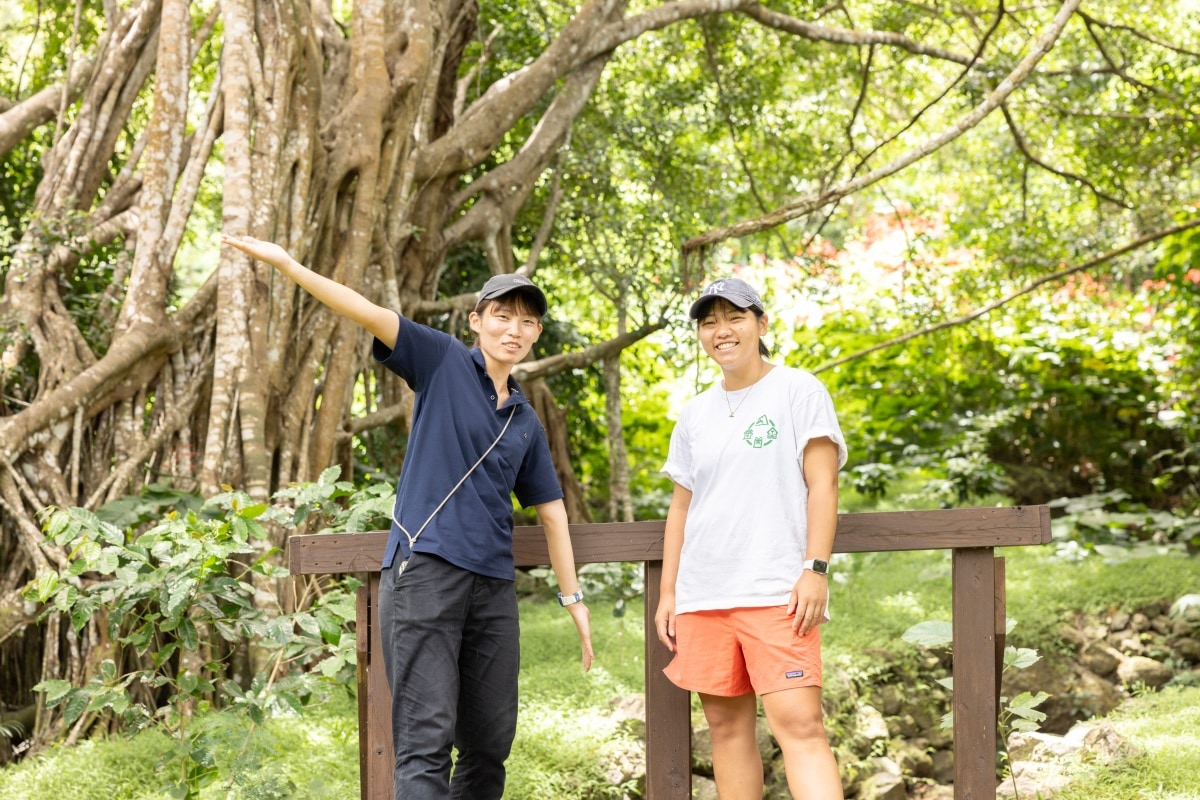
“Take your time and enjoy island life,” say staff members Anju Oka and Tsukushi Hara.
The team also plans to welcome repeat and long-stay guests, supporting workations and creative retreats in a quiet setting.
“The greatest reward is if visitors leave thinking, ‘I want to come back,’” says Takezawa. Rather than a sight to be consumed, Kanaka Village strives to be a place you return to—a small but sustainable model rooted in the island forest.

Kanaka Village
Operator: Ogasawara Ecotourism Resort
Address: Kitafukurozawa, Chichijima, Ogasawara-mura, Tokyo 【MAP】
Tel: +81-4998-3-5150
Please check the official website for current accommodation rates and optional activities.
URL: https://www.kanaka-village.com/
SNS:Instagram https://www.instagram.com/kanaka_village/

※This project was carried out with support from the Tokyo Convention & Visitors Bureau (TCVB) Adventure Tourism Promotion Grant.
Text: Tadayuki Matsui / Photos: Atsushi Ishihara


